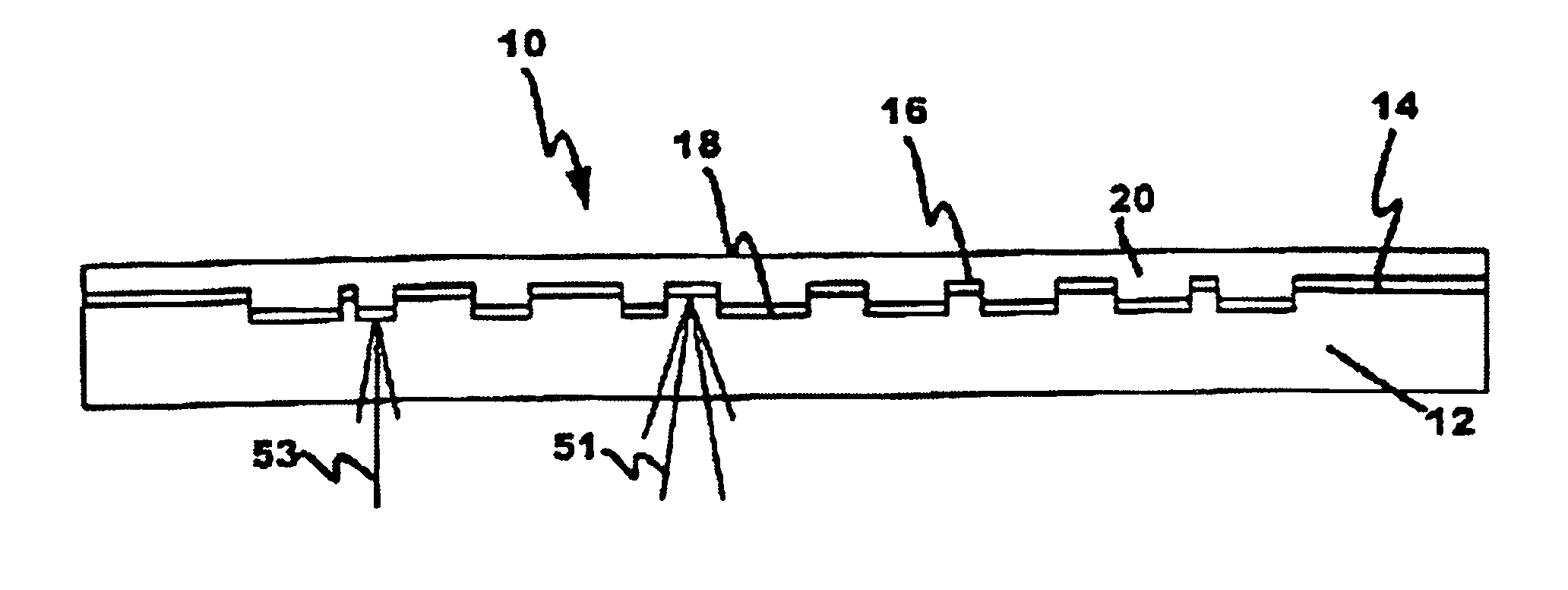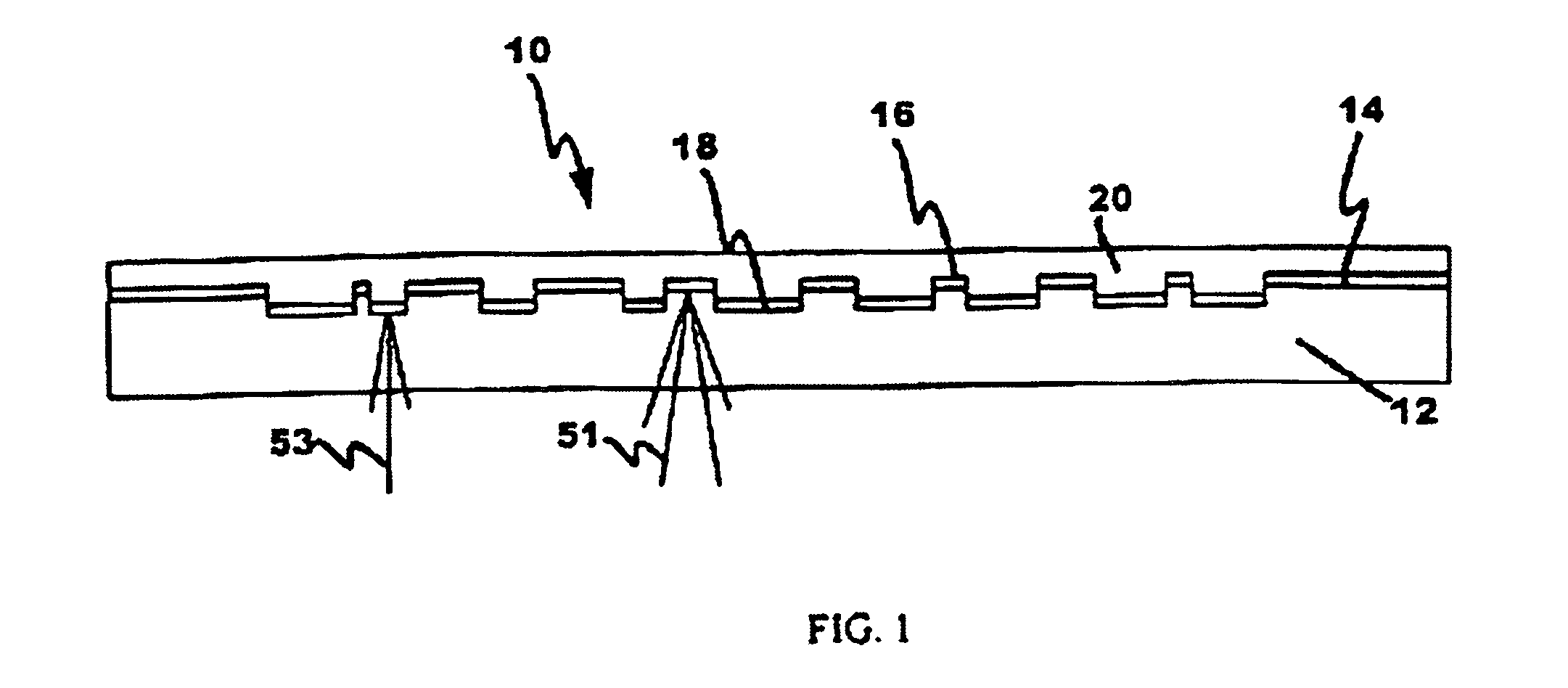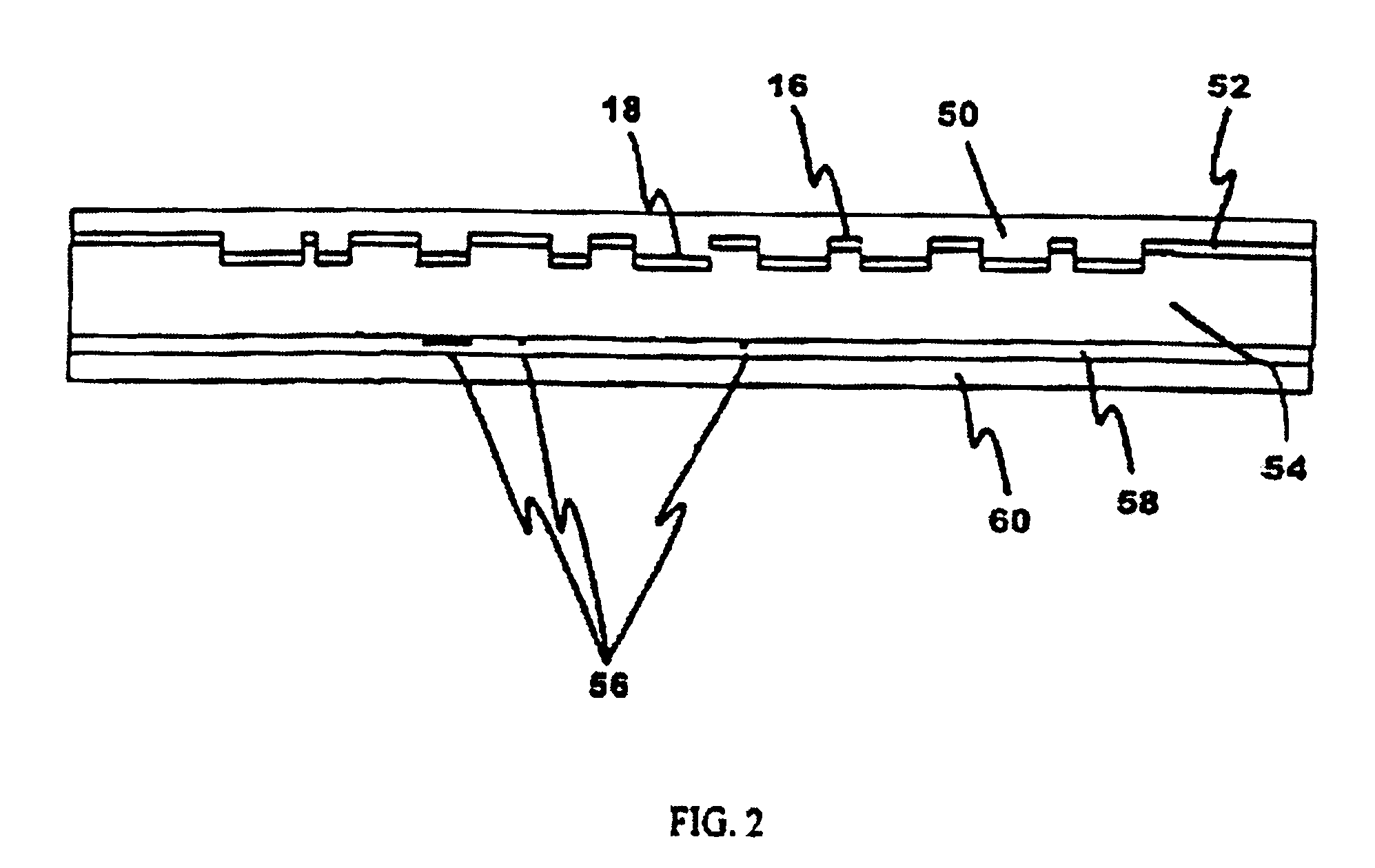The present invention provides an optical medium, and a method of manufacturer thereof, that provides
copy protection by incorporating a light-changeable compound in or on the optical medium at discrete positions (loci) such that it provides for altering of the
digital data output from a section of the
recording layer in a predictable manner. Such optical medium permits the data to be read without requiring alteration to the hardware,
firmware or
software used in optical media readers while preventing
reproduction of the medium. The optical media of the present invention provide producers and distributors of
digital data with a data distribution medium that prevents reproducing of their
digital data, for example,
software, audio and video. The present invention particularly relates to read-only optical medium including, but not limited to CD, CD-ROM, DVD, DVD-5, DVD-9, DVD-10, DVD-18 and DVD-ROM, where optical deformations representing the data are introduced permanently into at least a portion of the optical medium prior to distribution to an end-user. As would be understood by one of ordinary skill in the art, however, the present invention may also be used with writable and rewritable optical media such as CD-R and DVD-R.
The present inventors have discovered a method for altering and / or augmenting the optically-read data stored on an optical medium in a manner that does not prevent the underlying data from being read by a conventional optical medium reader, but prevents the production of a useable optical medium copy using such conventional optical medium readers. The present inventors have found that by selectively placing certain reversible light-changeable materials, and in particular light-emissive materials, at discrete positions on an optical medium, that a conventional
optical reader can be made at the
first pass of such positions to read the data represented by the optical deformations correctly, but on a second pass read the data differently due to the activation of the reversible light-changeable material. That is, the passing light of the reader may be used to influence the compound and change its properties so that upon re-reading, the
data signal that is received by the
detector is different from that which was received upon initial sampling. For example, the light-changeable compound may become reflective within a timeframe that provides for reflectance of the
light beam upon
resampling. Alternatively, the light-changeable material may provide for delayed emission or
absorbance of light, thereby altering the
signal either positively or negatively.
The present invention provides for specific optical media designs, and methods for manufacturing such designs, that incorporate light-changeable materials in a manner that selectively changes the data read-out of the
recording layer of an optical medium upon re-sampling of those portions of the
recording layer in proximity to the light-changeable material foci. In particular, there is provided optical medium designs that may be easily and economically produced without significantly altering the injection molding manufacturing process of read-only optical media (as set forth above).
A first embodiment optical medium of the present invention may be produced by disposing the light-changeable material onto the non-impressed side of the substrate after the substrate has been stamped and sufficiently cooled, and after the optical tooling mold is opened (but before the
sprue and product eject are brought forward for ejecting the formed optical medium off of the stamper). As would be understood by one of ordinary skill in the art such manufacturing technique permits precise registration of the light-changeable material with the data impressions on the other surface of the substrate. Preferably the light-changeable material is covered by a second substrate of similar (or identical) optical properties to protect the light-changeable material from its ambient environment. Such second substrate may be affixed to the first substrate either before or after the
sputtering step used to cover the stamped surface of the first substrate. Either or both of the first and second substrates may be spin-coated with an
adhesive agent prior to formation of such optical medium such that the
layers may be affixedly attached. Alternatively, the light-changeable material may be coated with a
polymer, as by spin-
coating. For example, an optically-pure
lacquer may be used to coat the light-changeable materials.
 Login to View More
Login to View More  Login to View More
Login to View More 


